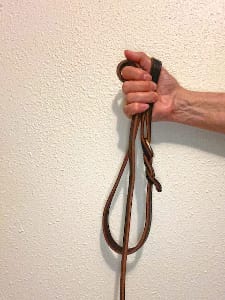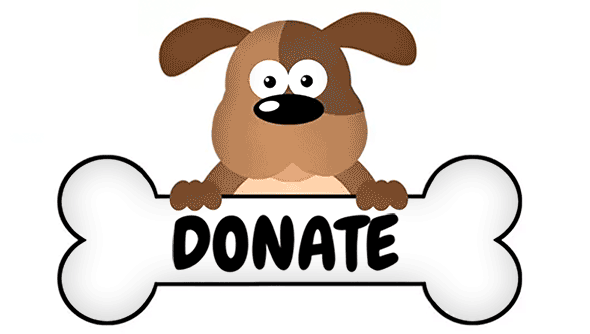 Pulling On Leash
Pulling On Leash
Teaching your dog or puppy how to walk on a loose leash might be one of the most challenging behaviors you work on. You have to be interesting enough to get your dog’s attention, despite everything that draws him away. And there’s the tricky fact that since dogs have four legs and we have only two, we walk too slowly.
Be aware that there is a difference between loose-leash walking and heel. A heel asks your dog to walk right next to your leg and is something that competition obedience teams work years to perfect. You might need a heel in tight areas., like construction zones, but for the most part, you only need your dog not to pull. The instructions below are for loose-leash walking, not heel.
Remember too that it’s your dog’s walk. Let him sniff, stop, be curious. It’s mentally stimulating, tiring, and lot more fun for your dog!
Equipment
“No-pull” harnesses can make training easier, and, unlike choke, prong, or electronic collars, they don’t cause pain or unintended consequences, A “no-pull” harness has a ring on the front or on the front and back. Use the front ring. If your dog is particularly strong, though, you can use two leashes or a double clip lead, attached to each ring. Remember that although these harnesses make it easier to train your dog, they don’t replace training.
Your Dog’s Friend sells our favorite harnesses and double-ended leashes; so, if you’re in the Rockville, MD area, contact us to schedule a time to try one.
Holding Your Leash
Put your hand palm up in the loop with your thumb outside. Close your hand. If you want to gather up the leash, use your other hand to put the excess in your leash hand, without making it too tight. This makes it easy to give your dog more leash by opening your leash hand, so he can go sniff. If you have a very strong puller, a thumb- or finger-lock hold will prevent the leash from sliding through your hands. The pictures below demonstrate this technique:



Always place your leash hand steady against your belly and keep it there. This lets you use the superior strength in your core and legs (versus your arms) to keep you stable and safe. If you have a very strong dog, you may need to hold both hands on the leash at your belly. Holding your leash this way will give you much greater stability, so you won’t be pulled off your feet, and your dog will know how much leash he has when walking. Some people find it helpful to put knots in the leash to have something additional to hold on to.
In contrast, if your arm is out and the leash is moving all over the place, you aren’t stable, and your dog never knows where you are. Or if you hold your leash around your wrist, you could break your wrist if your dog takes off.
When we’re anxious on walks, we tend to hold a tight, short leash or pull on the leash. Don’t. That tells your dog that there’s something to be anxious about, and it doesn’t teach him anything.
Where to Practice
Before working on any of the options below, it’s important to understand that you can’t just go out on your normal walk and expect immediate results. Start your training inside, then outside in your yard, driveway, or a quiet street. If walking on leash isn’t 100% reliable without distractions, you can’t expect it to be reliable with distractions. You’ll have more success if you put the time into training in non-distracting environments first.
Options for Leash Walking
There are a lot of different ways to teach polite leash walking. Every trainer has a favorite and a slightly different way of teaching even the same methods. Here are just a few of the options.
- Standing in place, hold the leash and clicker (or you can use a verbal marker) in your right hand and 10 – 15 pea-sized treats in your left. Click when your dog is next to or slightly behind your side. This placement is to stop your dog before he starts pulling. Repeat multiple times until your dog goes to the zone next to you quickly. Then, start moving – 1 step, click, treat. When your dog “gets it”, 2 steps, click, treat. Then, 3. Have a rhythm to your step, click, treat. When your dog is in the zone consistently, you can make your treats more random. Don’t move to this step too quickly, though, and be willing to go back to a more consistent pattern. If your dog pulls to the end of the leash stop with the leash stabilized at your belly, wait for him to turn back, and step away at an angle. Start again.
- Teach your dog the “1-2-3” game. Put a treat in your fist and hold your hand in front of your dog’s muzzle. Say 3 and open your hand to give your dog a treat. Repeat at least five times. Say 2-3, and give your dog a treat at 3. Repeat at least five times. Say 1-2-3 and treat your dog at the seam of your pants at 3. Start walking backwards; repeat 1-2-3, treat. Then, move forward with 1-2-3, treat. Repeat multiple times in a consistent rhythm. Gradually, extend the time between counting.
- J Walking is a way to teach your dog to keep the leash loose as he moves with you. Stay close enough, with your dog facing you, to put the leash in a J shape. Give your dog as many treats as possible in 30 seconds. Take 2 steps back and treat when your dog follows you; 2 steps to a side and treat when your dog follows you; then 2 steps forward and treat at the seam of your pants as your dog follows. Repeat multiple times. Your dog’s leash may cross at 2, but since the treats are delivered on the other side, your dog will correct himself.
- If your dog already knows targeting, you can use “touch” for walking. It’s probably not a good idea to keep your hand down the entire time you’re walking, but you can use it to get your dog back at your side. For smaller dogs, there are retractable “click sticks” that are long enough to reach your dog. You can teach your dog to touch the end of your stick, instead of your hand.
Whichever method you use, when your dog is walking with you, without pulling, periodically give him treats to reinforce his good behavior. Random treats will reinforce even a trained dog, and at that soccer game or street fair, bring plenty. For smaller dogs, you can hold a wooden spoon or squeeze tube with something soft but thick, like peanut butter, so you don’t have to bend down.
Once your dog has learned how to walk politely on leash, try varying your speed and turn in different directions during your walk. Talk to your dog, encouraging him with your voice and body language to follow your movements. DO NOT to jerk him around. Reward your dog for staying with you. You can even weave around trees and practice skills and tricks during walks. Being unpredictable will not only teach your dog to pay attention, you’ll both have a good time.
Whichever method you use, when your dog is walking with you, without pulling, periodically give him treats to reinforce his good behavior. Random treats will reinforce even a trained dog, and at that soccer game or street fair, bring plenty. For smaller dogs, you can hold a wooden spoon or squeeze tube with something soft but thick, like peanut butter, so you don’t have to bend down.
Once your dog has learned how to walk politely on leash, try varying your speed and turn in different directions during your walk. Talk to your dog, encouraging him with your voice and body language to follow your movements. DO NOT to jerk him around. Reward your dog for staying with you. You can even weave around trees and practice skills and tricks during walks. Being unpredictable will not only teach your dog to pay attention, you’ll both have a good time.
Yanking Your Dog
Please don’t yank your dog back when you’re out walking.
- Yanking your dog back can teach your dog that whatever he is being yanked away from is scary. It makes him physically uncomfortable, and can lead to barking and lunging on leash as a way of keeping “that scary thing” away.
- Dogs that already bark and lunge are usually scared about various things in their environment, and looking aggressive is their way of coping. By yanking on your dog, you are punishing him for being scared. And if your dog is wearing a choke, prong or electronic collar, you are also causing pain and, in your dog’s mind, that pain is associated with whatever he sees at that moment – children, other dogs, people, cars, etc.
- Yanking your dog back actually makes your dog pull harder in the opposite direction.
- Yanking doesn’t teach your dog what you want him to do.
Key Points to Remember
- Loose leash walking is all that your dog needs most of the time. Let your dog walk ahead, as long as he isn’t pulling. If your dog is allowed to take some time to “be a dog” and sniff the world, he will be more satisfied and tired after each walk. When you need to move on, use a cue like “let’s go”, instead of pulling him away.
- Hold your dog’s leash in your hand, not on your wrist, and keep your arm resting against your body, instead of moving around. This technique makes you more stable, and lets your dog know where you are. Put knots in your leash or use a thumb- or finger-lock hold, so the leash doesn’t slip through your hands.
- Consider having your dog fitted for a “no-pull” harness. These harnesses will make it easier to train your dog to walk on a loose leash. In addition, unlike choke, prong, or electronic collars, they don’t cause pain or unintended consequences.
- Before you can expect your dog to stop pulling, you must stop pulling. When you yank and pull on your dog’s leash, you are teaching your dog to pull harder in the opposite direction. Instead, say your dog’s name to get his attention. Invite him to move to you by taking a few quick backwards steps while using “happy talk.” Teaching your dog to walk on a loose leash should feel more like a game.
- There are several ways to teach your dog to walk on a loose leash. Use whichever is the easiest for you and your dog. Practice inside and in non-distracting environments first. And don’t forget to treat your dog, even when trained, periodically for not pulling.
- Avoid walking directly toward another dog. In the doggy world, this behavior is considered rude, or even threatening. However, we put our dogs in this position all the time. There is no rule that you have to walk on sidewalks, streets or paths. If there’s an open area, walk there, cross the street, or walk around the other dog in an arc instead of creating an uncomfortable and challenging situation.
- Being unpredictable in your movements will teach your dog to focus on you and make walks more fun. So, walk slowly, then fast, turn, weave around trees or poles, do some training or tricks, and have fun!
For additional help walking a reactive dog, read our handout on dog-reactive dogs. For ideas when walking a dog that chases squirrels, joggers, bikes, etc, see our write-up on Dogs That Chase.
Resources
The webinar, Dog Training Essentials – loose-leash walking & coming when called, was presented by Amie Glasgow of Oscar Winning Behavior. It is on Your Dog’s Friend YouTube channel at https://www.youtube.com/watch?v=xXF4582HiRA
There are some good walking on leash videos, including 300 Pecks – Clicker Training Loose-Leash Walking (https://www.youtube.com/watch?v=DayHrhoSJZc) and Helix Fairweather’s method, similar to J Walking with a high rate of reinforcement, starting with https://www.youtube.com/watch?v=CSmOOcELgxU (There are three videos in this series.) Remember, every trainer teaches loose-leash walking a little differently.
The Whole Dog Journal has an e-book called “Walking Your Dog” that is about 25 pages with illustrations. Go to http://www.whole-dog-journal.com/ebooks/-20583-1.html
This material is not intended to be a substitute for professional help when dealing with dogs with intense or potentially dangerous behavior issues. Consider consulting a positive reinforcement trainer or veterinary behaviorist for situations that you feel are dangerous or that you don’t feel equipped to handle. A list of recommended trainers and behaviorists can be found on our website at https://yourdogsfriend.org/we-recommend/positive-trainers/.
Still Need Help?
Contact Your Dog’s Friend at [email protected] or (301)983-5913 for advice and referrals or check out our list of recommended trainers and behaviorists.
Your Dog’s Friend is a nonprofit 501(c)(3) organization working to improve dogs’ lives, reduce problem behaviors, and keep dogs out of shelters, by educating and supporting their humans.
This material is not intended to be a substitute for professional help when dealing with dogs with intense or potentially dangerous behavior issues. Consult a positive reinforcement trainer or veterinary behaviorist for professional assessment, guidance, and support.




